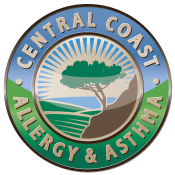The genus Plantago is comprised of more than 200 species of plantain worldwide. Approximately 20 species are found in North America, of which 12 are native, and all are anemophilous. English plantain, P. lanceolata, the most important inducer of pollinosis, was introduced from Europe, as was common plantain, P. major. They are now as common as native species. American Indians called these plantains "white-man's foot," probably recognizing their introduced nature.The ground seed of P. psyllium is used as a laxative, mucilage from P. lanceolata has been used to stiffen fabrics, and leaves of P. major used in herbal remedies and boiled as a potherb. English plantain is found throughout Europe and Asia, and across Canada and the United States. It grows in moist soil, waste places, and irrigated pastures and gardens, from 100 to 8,000 feet altitude.
English plantain is a biennial or perennial herbaceous weed, reproducing by seed or shoots from the roots. Leaves are arranged in a basal rosette, and are narrowly oblong, tapering to the petiole, with 3 to 7 strong longitudinal ribs. Stems are leafless, up to 16 inches long, with a short terminal flower spike. Flowers are complete, but first show the female styles, which wither, followed by appearance of the white anthers. Maturation proceeds proximally to distally. P. lanceolata begins pollinating in April or early May, peaking in most of its range in May or June, but continuing throughout the remainder of summer and fall. In the southeastern and south central states, and in parts of midEurope, anthesis may commence in March and extend into November. In the northwest, Plantago pollen may account for a quarter of the airborne pollen load in July and August. Despite overlap with grass pollination, most authors have considered plantains as important aeroallergen inducers of allergic rhinitis. Plantain was 1 of the 6 most common sensitivities found in Australian children with bronchial hyperreactivity and wheezing, indirect evidence for its role in asthma.
Adapted from: Annals of Allergy, Richard Weber, MD, November 2003